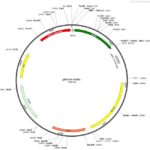If you’re encountering issues with your steering angle sensor and seeing the U112200 fault code, a calibration procedure might be the solution. This process typically takes less than 10 minutes. Here’s a step-by-step guide:
Preparation:
Ensure the engine is OFF and the ignition is ON before starting the procedure. This initial step is crucial for accessing necessary coding functions.
Calibration Steps:
-
Access Steering Assistance Control Unit: Navigate to the control units menu and select “Steering assistance.”
-
Check Live Data: Within the “Steering assistance” menu, select “Live Data.” Choose “Steering angle sensor, angle” and confirm with “OK.” Center your steering wheel and verify the angle reading is not more than 0 degrees. Do not move the steering wheel until the entire procedure is complete. This step confirms the system is ready for calibration and may unlock further coding permissions.
-
Enter End of Assembly Line Mode: Go back to “Steering Assistance” and select “Diagnostic session.” Change the session to “End of Assembly Line mode” (EOL).
-
Activate Basic Settings: In “Steering Assistance,” select “Basic settings” and then “Steering angle sensor.” Activate this option and wait for it to automatically turn off, which usually takes about 60 seconds.
-
Cycle Ignition: Turn the ignition OFF, then back ON. Finally, start the engine.
-
Zero Calibration: Access “Basic settings” in “Steering Assistance” again. This time, choose “Steering angle sensor, zero calibration w/ steer. wheel scales.” Enter a value of “0” degrees and confirm with “Done.”
Verification:
After completing these steps, the U112200 fault code and any associated dashboard warning lights should disappear. Turn the ignition OFF, perform a final diagnostic scan, and clear any remaining fault codes.
Troubleshooting Persistent Issues:
If the U112200 error persists after performing the calibration, further diagnosis is required. Potential causes could include a faulty steering angle sensor, wiring issues, or problems with the steering column module. Consult a qualified automotive technician for advanced troubleshooting and repair.

